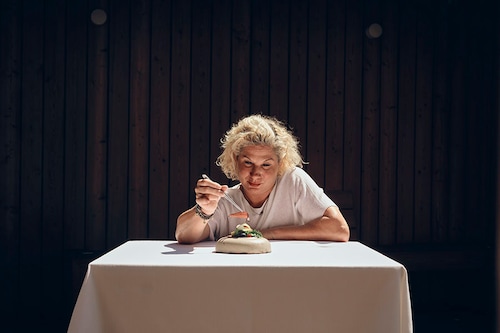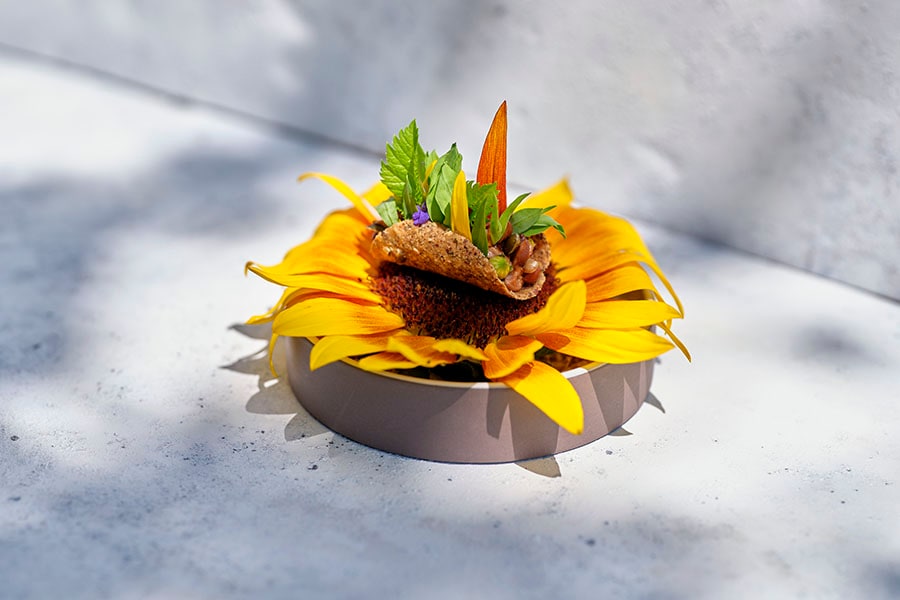I consider myself a wild child of gastronomy: Ana Ros
On her visit to India, the Slovenian chef at a three-Michelin starred restaurant and owner of Hiša Franko speaks about her journey, her accolades, process of work and more


“The kitchen is a great place to learn about a country," believes chef Ana Ros. The world’s best female chef awardee in 2017, Ros is chef and owner of HiÅ¡a Franko, a three-Michelin starred restaurant in Slovenia. As one of the eight female chefs whose restaurant has been awarded three Michelin stars, she is also the recipient of a Michelin Green Star, and the Best Chef Pristine Award for her utmost respect for and use of the highest quality local produce at a terroir-based restaurant. She is also the ambassador of gastronomic tourism at the World Tourism Organization (UNWTO).
Currently on her third visit to India, Ros is collaborating with Conosh, a curator of fine-dining experiences, Taj Mahal, Delhi, and Taj Mahal Palace, Mumbai, for dinners and masterclasses for the Indian audience at both cities. Having enjoyed both local street food, and fine-dining experiences in the two cities, she is particularly inspired by the variety of Indian fishes and masalas and is fascinated by paranthas and paneer which she says are some of her favourite Indian dishes. So much so that she jokes about wanting to take 50 kg of Indian ingredients back with her to Slovenia.
In a conversation with Forbes India, the culinary virtuoso who is also a sport and travel enthusiast talks about her journey, accolades, process of work and more. Edited excerpts:
Q. Tell us about your journey in the culinary world and how you found your passion for cooking, and eventually opened a restaurant?
Well, this passion developed slowly. I"m not one of those chefs who was meant to become a chef or who would be cooking with their parents or grandparents as children. I was a very active child, interested in sport and dance. I only considered food as nutrition, let"s say. I used to come home, and the food was on the table, and I ate. Although I had good examples of great cooking—my grandmother and mother were really good, creative cooks. They didn’t cook by the book, and instead used a lot of imagination. My first step into cooking started at the university where I was sharing a flat. Whenever it was my turn to cook, all my flatmates preferred to go for pizza. But then at the end of the university, I met my ex-husband and they had a simple restaurant on the Italian border. I graduated from university and decided not to proceed with my career… I stayed and started helping in the restaurant and kitchen. I learnt a lot. I tried to know and understand everything that there was to know about cooking and used my creativity to improve things.
 Seed taco, black sunchoke puree, pears and silene vulgaris.
Seed taco, black sunchoke puree, pears and silene vulgaris.
By that time, we were also travelling a lot around the world, and tried many different dishes and cuisines, and food became a passion for me. Then one day, I just decided that I want to change things around and get into cooking as a sure-shot career option. The rest was hard work—a lot of learning, studying, asking questions, reading books, trying to figure out how to build up a chain of producers, farmers, ingredients to work with, going for conferences, listening to other chefs. I consider myself as a wild child of gastronomy.
Q.What is your process of cooking and what sets it apart?
I think a very important thing for me is observation. For all creative processes—such as cooking—we should be walking around the world with our eyes wide open. Be it walking in nature, or going to the fish market, or observing people around you eat, in fruit markets, vegetable markets, gardens, your eyes and nose should also be at work. And then, of course, putting in a lot of your creativity in using your observations to make elements in your cooking. My character is pretty wild so I can see colours in a different way unlike how others see them. Knowing about the products which I want to work around, understanding what"s in season, what"s local—all this is important to me. And then I start playing around with flavours like the painter paints. And then, at the end, beauty and a sense of aesthetics are also important to me for my cooking.
Q. What are some of the things that you observed in India?
I had a great chance to visit some markets, especially the spice market in Delhi and Mumbai. I think Delhi is such a mysterious city because there’s something going on in every corner of every street there, and in Mumbai, I got a chance to actually see how you guys produce masalas and powder them. I thought that was incredible. The whole experience has been unique.
Q. How do you think your observations and learnings from the Indian style of cooking can be put to use at your restaurant?
I think both styles are completely different. It"s like two different worlds. That"s exactly why I think that it"s worth travelling and discovering new flavours and new philosophies. I will definitely use the knowledge I gained here and implement it there, especially about spices and how much they can elevate certain dishes. We can call them India-inspired dishes.
 Skuta in krompir. Image: Sandi Rutar
Skuta in krompir. Image: Sandi Rutar
Q. Being featured on Chef"s Table and ranking highly on prestigious lists such as The World’s 50 Best Restaurants and Best Chef Awards, how do you handle the pressure of maintaining such high standards while staying true to your culinary vision?
I am an absolute control freak. And my biggest pressure is guest satisfaction. If the guests are happy, I am happy. I keep telling myself that at the end of the day, we work for guests and not for inspectors. Which doesn"t take away from the accolades. It"s amazing to have three stars and amazing to be the best female chef in the world. It"s a dream but you don"t work for that. That is just the reward for your work.
Q. Which is your favourite dish that"s made by you?
Oh, I can’t answer that. It"s like asking a mother which is her favourite child. It"s difficult. But I think it is important for a chef to have a proper sit-down meal with their dishes on the table. I think it is very inspiring, eye-opening and a unique experience.
First Published: Feb 22, 2024, 15:08
Subscribe Now